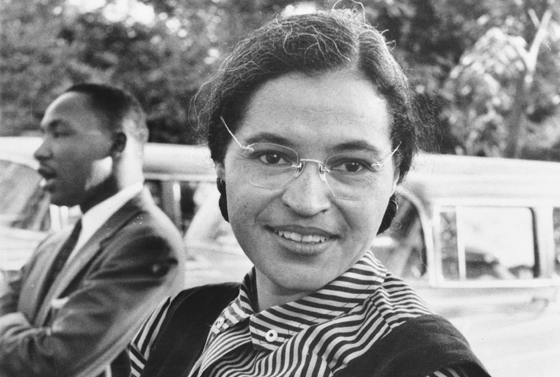
A Basic History of Racial Inequality in America: Part 2
A Basic History of Racial Inequality in America: Part 1 Can be seen by clicking here
1900 – Jim Crow
In 1896, the Plessy v. Fergusson Supreme Court case established the doctrine of ‘separate but equal’, as the Court upheld a Louisiana law that required the segregation of passengers on railroad cars. Based upon this idea, in 1900, Southern states began enacting the Jim Crow laws; the first segregation laws stating that ‘persons of colour’ would have to be separated from whites in public spaces such as restaurants, schools, hotels and many more.
The laws took their name from a white actor who often performed a minstrel routine in blackface, with the name ‘Jim Crow’ becoming a derogatory term for African Americans.
1909 – NAACP formed
Black communities began to face shortages of unemployment and housing, while lynching and other violent acts carried out by whites were commonplace. After a wave of race riots in 1908, the first political protest movement to defend the rights of black Americans was formed; the National Association for the Advancement of Coloured People. Among their goals was the abolition of segregation, equal education for black and white students, black male enfranchisement, and the enforcement of the 14th and 15th amendments. The NAACP remains one of the most powerful and widely-recognised civil rights organisations today.
1920s – Harlem Renaissance
For the first time, African American music, literature, and art was being taken more seriously in the 1920s. As black Americans migrated from the oppressive south to the urban north, a cultural renaissance ensued, taking its name from the Harlem neighbourhood of New York City. Figures such as Louis Armstrong and Duke Ellington emerged as some of the most influential jazz artists in history, while Josephine Baker became one of the most celebrated dancers of the time. The renaissance highlighted however, a great reliance upon white publishers, audiences and recorders, demonstrating the racial power dynamic so prevalent in society.
1936 – Berlin Olympics
African American sprinter Jesse Owens amazed the world by breaking Olympic records and winning four gold medals in Berlin during the Nazi regime. This echoed the remarkable achievements of black Americans in other sporting fields such as baseball. It also served to highlight the racial inequality in America; the nation celebrated its black athletes as heroes to the globe, but treated them as second class citizens at home.
1939-45 – WW2
During the Second World War, more than 3 million black Americans registered for service, with 500,000 in action overseas. African Americans were responsible for huge military feats and as a result, President Truman mandated that ‘there shall be equality of treatment and opportunity for all persons in the armed services without regard to race, colour, religion, or national origin.’
1954 – Brown v. Board of Education
This was a landmark Supreme Court case, which reversed the ‘separate but equal’ clause of Plessy v. Fergusson by ruling that racial segregation in public schools violated the 14th Amendment – that any person within its jurisdiction be afforded equal protection of the laws of the US Constitution.
1955 – Murder of Emmett Till
A 14 year old African American boy, Emmett Till, was brutally murdered for allegedly wolf whistling at a white female working in a small grocery store. His mother held an open casket funeral for the world to see his savagely beaten face, while his murderers were declared not guilty. Till’s murder highlighted the long history of violence towards the black community, which still featured methods such as lynching, tar and feathering, and burning down their houses.
1950/60s – Civil Rights Movement
Grassroots activists began peacefully protesting the blatant inequality of the Jim Crow Laws in many different aspects of society. In 1955, Rosa Parks ( pictured, protesting against racial inequality in America with Martin Luther King jr.) was asked to give up her seat on a bus for a white man. She refused and was arrested, which sparked the Montgomery bus boycott. In 1960, four black students sat at an all-whites lunch counter at Woolworth’s in Greensboro, which led to the formation of the Student Nonviolent Coordinating Committee (SNCC), one of the biggest student groups fighting for racial equality. Through boycotts, sit-ins, marches, and many other methods, the African American community acted within their rights to demonstrate their power as equal citizens, deserving of equal rights.
Martin Luther King Junior spearheaded the movement, becoming well-known for his captivating oratory. He argued in his 1957 speech entitled ‘the Power of Non-violence’, that the goal was to win the friendship and understanding of the enemy and ultimately, to achieve reconciliation and the creation of a beloved community. In 1963, King gave his famous ‘I Have a Dream’ speech to some 250,000 people.
In 1964, the Civil Rights Act was passed, which mandated the desegregation of public areas. This was shortly followed by the Voting Rights Act of 1965, stipulating that black Americans would have equal voting rights which had previously been denied due to discriminatory registration requirements, such as the Impossible literacy test.
1960/70s – Black Power
Although black power existed prior to the 1970s, it took off after the assassination of MLK in 1968 and stirred a shift in a larger movement for racial equality.
Malcolm X was a pioneer of black power, a movement centred on inspiring racial pride and uplift in the community. In his 1964 speech entitled ‘the Ballot or the Bullet’, X called for a re-evaluation of the black community in terms of increasing social standards, minimising alcoholism and drug addiction, and gaining control over the black economy. He stated that he was not anti-white, but anti-exploitation, anti-degradation, and anti-oppression of African Americans by the white man. However, X was also to be shot dead, in 1965.
The Black Panther Party were also instrumental in the formation of the movement, arguing that activism in terms of self-defence violence was a necessary means of protection. A large part of the Panthers’ activism was based around improving black communities that were being neglected by the oppressive government. For example, this involved providing free healthcare to the black ill or wounded, aid to the black elderly, and free breakfasts to black school children to tackle the prevalence of sickle cell anaemia in black communities. The BPP were more militant in their activism, and while historians have argued the unhelpful and provocative nature of their armed patrols, its members were merely enforcing their 2nd amendment constitutional right to bear arms.
Some links to relevant source material and sites can be found below.
Martin Luther King Jr, The Power of Nonviolence, speech, 1957
https://faculty.atu.edu/cbrucker/Amst2003/Texts/Nonviolence.pdf
Martin Luther King Jr, I Have a Dream, speech 1963
https://www.youtube.com/watch?v=vP4iY1TtS3s
Malcolm X – The Ballot or the Bullet, 1964
https://americanradioworks.publicradio.org/features/blackspeech/mx.html
To Kill a Mockingbird – Harper Lee
A final article on Racial Inequality in America will appear on this site soon.
